Ho Chi Minh’s Stilt House
During his time as the President of North Vietnam, Ho Chi Minh decided not to settle in the Presidential Palace, but in a modest stilt house behind. The house is called the Ho Chi Minh’s Residence or Ho Chi Minh Stilt House. The construction is located in the Ho Chi Minh Complex and worth a visit to learn more about one of the greatest people in the 20th century in Hanoi tour package.
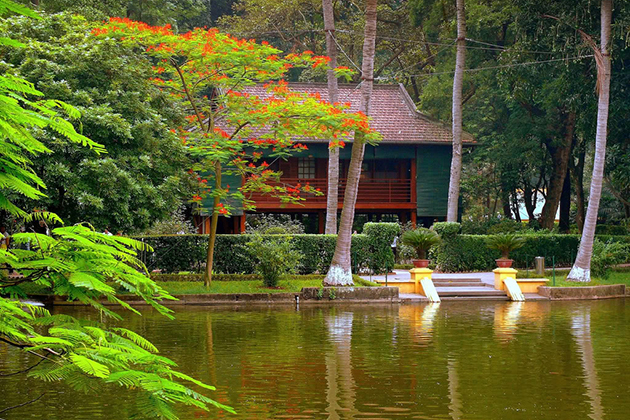
History of Ho Chi Minh’s Stilt House
After taking the control of Hanoi from the French Governors, Ho Chi Minh was appointed as the President of the Democratic Republic of Vietnam. Due to his supreme position, he was supposed to reside in the Presidential Palace, which was a French mansion built to be the residence for the former governors. However, those former rulers and their reign had left such painful memories and hatred in the minds of Vietnamese people that Ho Chi Minh did not have any desire to live in a place of their legacy.
Upon a visit to the north-west and saw the architecture of traditional stilt houses used by ethnic people, Ho Chi Minh was inspired and called for a similar design to be his residential place. A new “president palace” was built, with a simple wooden layout and only two small rooms, no toilet – this was the place that Ho Chi Minh spent his life as Vietnam’s president until his death in 1969.
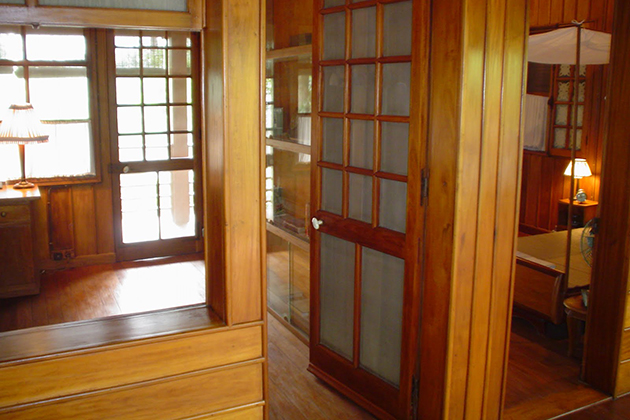
Ho Chi Minh’s stilt house is a clear portrayal of his image as “the man of the people” – a frugal person with fond of a simple life. Every day there are groups by groups of Vietnamese people visiting this wooden house, to feel the lingering presence of their late presidency – a man wearing brown cotton clothes and car-tires sandals. Looking at him, people sometimes mistook that he was not their larger-than-life president, but just a typical country old man.
Sectors in Ho Chi Minh’s Stilt House
The Surrounding Area
The Stilt House occupies just a corner of the garden in the Presidential Palace. The stilt house must be reached through the entrance gate of the Presidential Palace, along with a 300-footpath of the tree-covered Mango Alley to the designated garden.
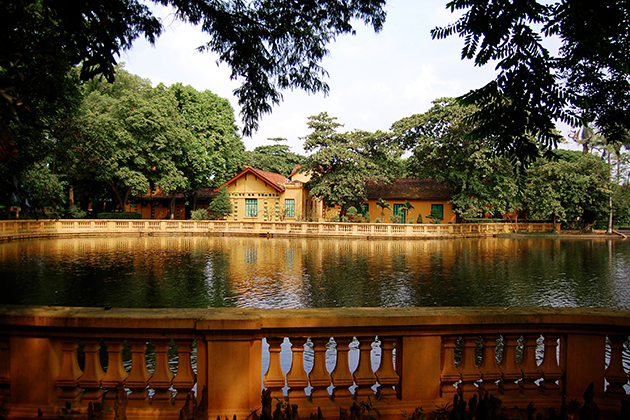
The Mango Alley then circles around a sizable pond, with crystal-clear water and dozens of carps. Legend said that Ho Chi Minh, just like the ancient Asian mediators, nurtured the habit of fishing to balance his emotion and mind. The fishes can be fed with only a single crisp clap.
The Stilt House
In appearance, it looks no less different from the traditional wooden house on stilt of ethnic people in Vietnam’s mountainous areas. Reflecting the soul of its owner, a man with his love for nature, the house is embraced by fruit trees and flowers. The stair leads to two small rooms inside the house. The size of the rooms are quite small, just leaves minimum space for personal living – a proof of the simple taste of Ho Chi Minh.
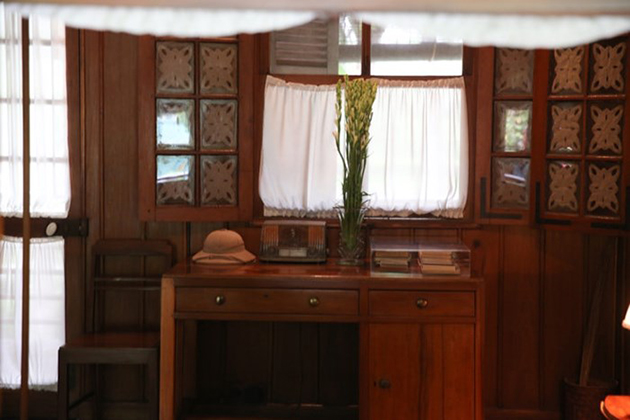
Ho Chi Minh’s study is the room furnished with books, old newspaper, typewriter, and a Japanese fan. The sleeping room consists of a simple bed, a vintage-looking telephone, electric clock and old-style radio. Vietnamese historians still keep the black and white film featuring the life and work of Ho Chi Minh in this house, also the moments just before his death.
Under the house is an empty space, used as a receiving “office”. Communist Generals and Foreign Guests visiting Ho Chi Minh were invited to sit in simple bamboo chairs. Peaceful as it may look, space also contains some concessions of the raging war at that time: a group of phones to other departments, steel helmet and other protection against bombing.
Highlights of Ho Chi Minh’s Stilt House
Ho Chi Minh Stilt House is not just an architecture of unique design but also a historical monument – one that recorded the later life and bore painful witness to the last moment of Ho Chi Minh. Below are some of the reasons why a visit to the Ho Chi Minh Stilt House is worth considering:
- Different from other cold, solemn places in the Ho Chi Minh Complex, the Stilt House has a rather enchanting and peaceful air – a reflection of its owner’s personality, closed and friendly to his people.
- Ho Chi Minh Stilt House is a meaningful presence to Vietnamese people, a place where their beloved leader lived and died. Visiting the Stilt House, international tourist can see the respected attitude of domestic visitors – how they paid honor to the man who had lived here.
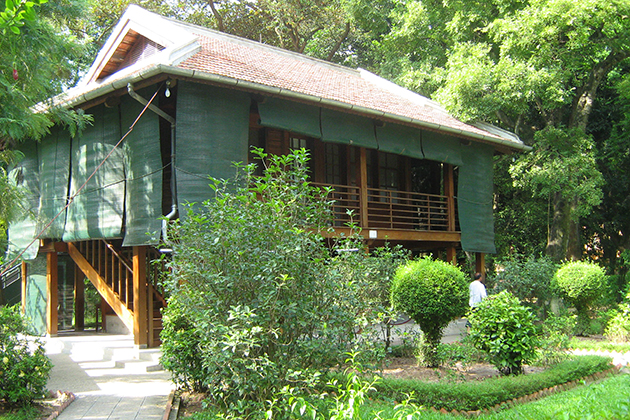
- Stilt House is a unique housing design of Vietnam and Ho Chi Minh’s residence is a proud example of that. Other than the memory of Ho Chi Minh, just the house itself is a place worth observing – a wooden house on stilt, built inside a lovely garden and covered by trees. It says the desire of men for peace and resting, no matter in the time of war and aggression.
- Visitors are free to try fishing carps on the pond, emerging in the experience of a historical leader. The fishes now still respond to a single crisp clap, as they did years and years ago when Ho Chi Minh still fished here.
Ho Chi Minh’s Stilt House Travel Guide
How to Get There
The Ho Chi Minh Stilt House or Ho Chi Minh’s Residence is one section in the Ho Chi Minh Complex together with Ba Dinh Square and One Pillar Pagoda, located within the garden of the Presidential Palace. For visitors getting to the Ho Chi Minh Complex by private transportation, parking is available at the entrance gate of the Ho Chi Minh Museum.
Buses number 09, 34, 22 all offer a stop at the Le Hong Phong Street, just less than minutes walk to the Ho Chi Minh Complex.
Entrance Access
Opening hours: From 7:30 am to 4:00 pm, with a lunch break from 11:00 am to 1:30 pm.
Entrance fee: 25,000 VND for international visitors.

